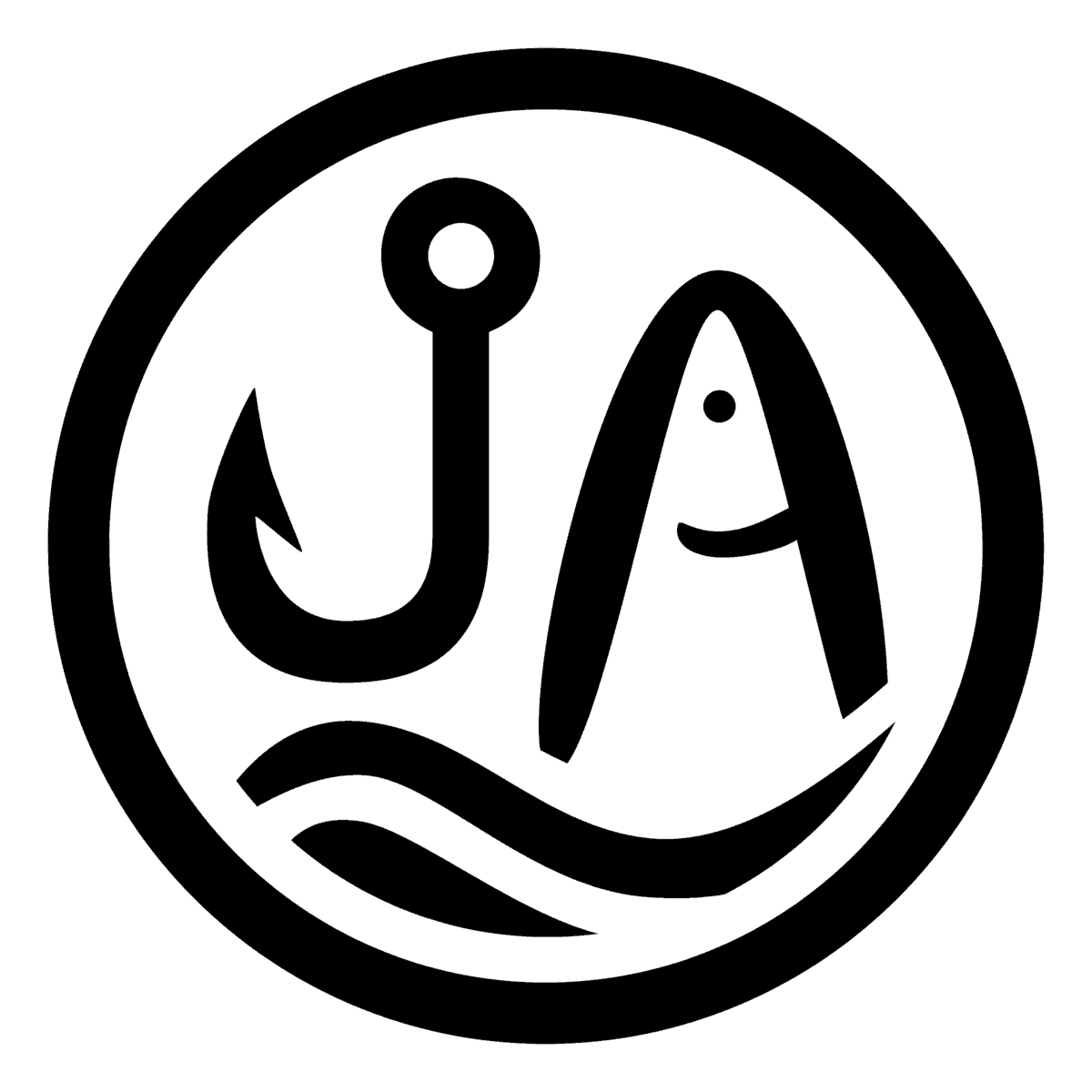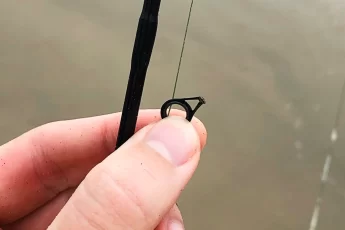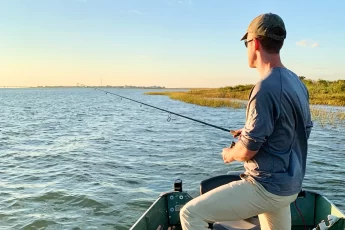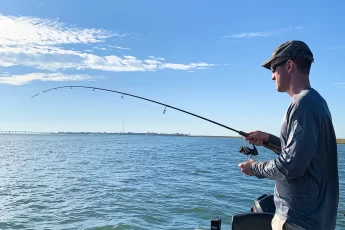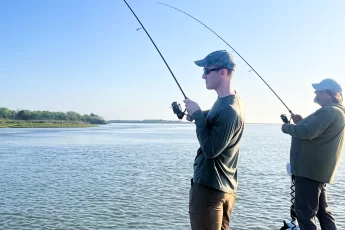
Updated 2/13/2024
Mahi mahi are a popular offshore fish species known for their vibrant colors, delicious fillets, powerful runs, and for causing complete mayhem on the fishing boat when you find a school. Also known as dolphin fish or dorado, mahi mahi are one of the fastest growing fish in the ocean with an average lifespan of three to four years. When you find a school of mahi mahi, it’s important to have the best mahi mahi rods ready to go to maximize chances of success.
I’ve done the hours of rod research and testing on weight, strength, durability, and material quality so you don’t have to. Check out my top recommendations for the best mahi mahi fishing rods to have the right rods for the job.
*Disclosure: I only recommend products I would use myself and all opinions expressed here are my own. This post may contain affiliate links that at no additional cost to you, I may earn a small commission.
Our Top Picks
We’ve included a diverse type of rods on this list including spinning, casting, conventional, and trolling rods. Mahi mahi are targeted with a variety of fishing techniques that put different demands on gear. Check out our considerations for each rod type later in the article.
- Best for the Money: Penn Battalion II Inshore Fishing Rod
- Best Under $100: Ugly Stik Bigwater Fishing Rod
- Best Budget Trolling: Fiblink Trolling Rod with Ring Guides
- Best Offshore: Penn Carnage III Fishing Rod
- Best Rod & Reel Combo: Penn Squall Lever Drag Conventional Rod & Reel Combo
The 5 Best Rods for Mahi Mahi
Whether you’re a novice angler or a grizzled expert, we have you covered. Check out my recommendations for overall best mahi mahi rods for different categories like best value, best for different price points, and more!

1. Penn Battalion II Inshore Rod
- Length: 7′ to 8′
- Power: Light to Extra-Heavy
- Rod Material: SLC2 Carbon
- Guides: Fuji Alconite
- Handle: Premium Cork or Rubber Shrink Tube
- Warranty: 1 Year manufacturing defects only
Pros:
- Variety of sizes accommodates multiple fishing techniques
- Premium rod features for reasonable price
Our choice for best mahi mahi rod for the money is the Penn Battalion II Inshore Rod. This rod captures a great balance of value, price accessibility, and quality features. It’s a workhorse fishing rod that is perfect for almost anything the ocean can throw at it.
Is this rod perfect? No. Is it solid equipment for the price? Definitely.
We love the 7′ medium-heavy and heavy power Penn Battalion II Inshore Rods as great mahi mahi rods for free-lining bait or casting surface artificial lures. This setup is perfect for mahi mahi but also makes a great heavier-duty inshore setup for redfish and speckled trout. We like our top choices to have great value and versatility for the money.
We recommend pairing with a saltwater rated 4000 size spinning reel. Check out our article on the best saltwater reels for great reel options.
The SLC2 Carbon rod blank and Fuji Alconite guide material construction are considered mid-tier materials that should last plenty long with proper care. The full cork handle on the medium and lighter versions feel great for prolonged inshore fishing trips. The medium-heavy and heavier versions come with a rubber shrink tube handle that is plenty grippy to fight big fish. We do wish Penn offered a better warranty (like St. Croix), but it’s hard to complain at this price point.
2. Ugly Stik Bigwater Rod
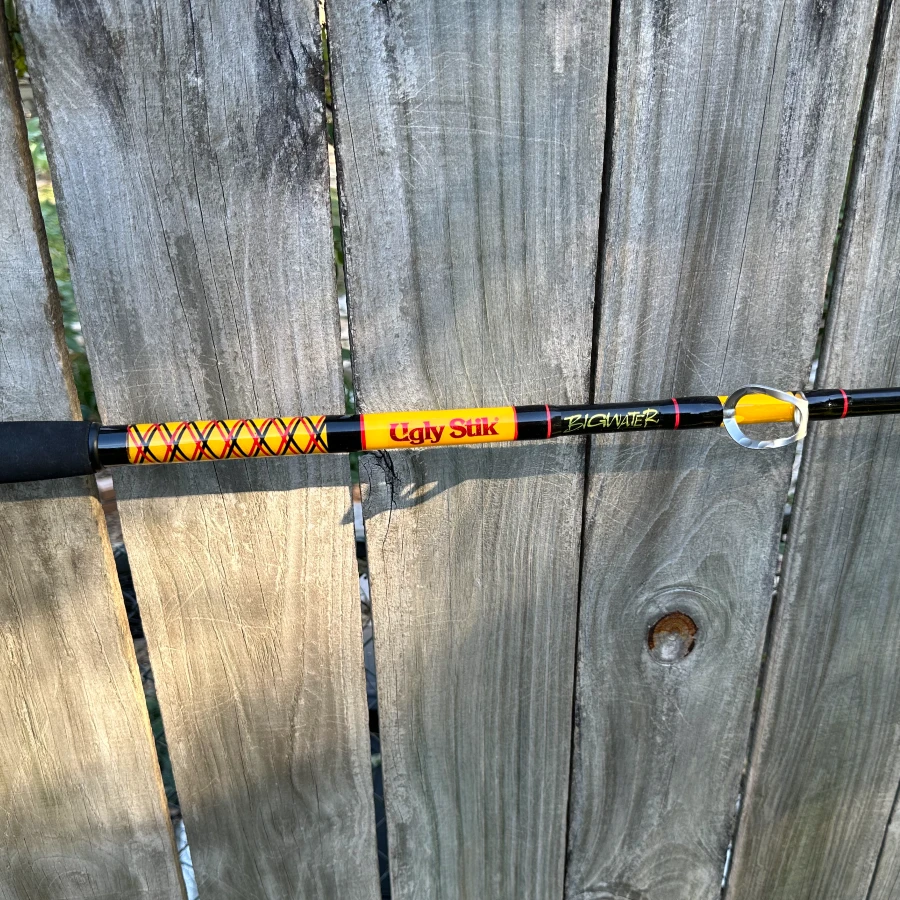
- Length: 6’6″ to 15′
- Power: Medium to Heavy
- Rod Material: Ugly Tech (combo graphite & fiberglass)
- Guides: Stainless Steel
- Handle: EVA Foam
- Warranty: 7 Year manufacturing only
Pros:
- Budget friendly
- Wide range of sizes available
Our choice for the best mahi mahi rod under $100 is the Ugly Stik Bigwater Fishing Rod. Budget pricing doesn’t mean budget performance. This rod is nearly indestructible and comes in a range of sizes and powers perfect for all types of inshore fishing.
This rod is plenty sturdy. It’s heavier and less sensitive than most other similar class rods. The stainless steel inserts will succumb to saltwater corrosion quicker than pricier alternatives. The foam handle is functional and feels fine (although we personally prefer cork!).
We love that this rod comes in a huge range of sizes and it has a better warranty than many of the pricier rods available. For mahi mahi, we recommend the 7′ medium-heavy power Ugly Stik Bigwater fishing rod.
This is an excellent budget option that can catch fish just as well as higher-end rods. Don’t think twice about adding an Ugly Stik Bigwater to your fishing arsenal.
3. Fiblink Trolling Rod with Ring Guides
- Length: 6′ to 7’6″
- Rod Material: Blend of fiberglass & carbon
- Guides: Stainless Steel Ring Guides
- Grip: EVA Foam
- Warranty: 1 Year Manufacturing Defects
Pros:
- Great price point for heavy-duty trolling rod
Our choice for best budget trolling rod for mahi mahi is the Fiblink Trolling Rod with Ring Guides. Mahi mahi are a fast swimming fish that are more than happy to gulp down a bait in a trolling spread.
We recommend the 30-50 lb rated, 6′ Fiblink Trolling Rod with ring guides as a great budget trolling rod setup for mahi mahi. While it is possible to catch bull mahi over 40 pounds, most mahi mahi caught will be between 15 and 30 pounds. Fiblink also makes this rod with roller guides to reduce friction on massive fish but we think this is overkill if primarily trolling for mahi mahi.
This is a great option for trolling anglers looking for a sturdy rod at a reasonable price point. It has a sturdy aluminum alloy wheel seat for a robust connection between the reel and the rod.
Check out our article on the best trolling rods for other great trolling rod options.
4. Penn Carnage III Boat Fishing Rod
- Length: 6′ to 8′
- Power: Light to Heavy
- Rod Material: SLS3 Composite
- Guides: FUJI K Silicon Carbide
- Handle: Rubberized shrink wrap with aluminum reel seat
- Warranty: 1 Year manufacturing defects only
Pros:
- Exceptional quality
- Robust construction
Our choice for the best overall offshore rod for mahi mahi is the Penn Carnage III Fishing Rod. Penn is known for making some of the best offshore rods on the market. The Carnage line comes in a bunch of models. We recommend the ‘boat’ conventional and ‘boat’ spinning versions for great offshore mahi rods.
The 7 foot, medium power Penn Carnage III Boat rod is an excellent all-around offshore fishing rod.
The SLS3 rod blank alternates layers of carbon fiber and fiberglass for an exceptionally sturdy rod for fighting huge fish. The reel seat is the robust Sea Guide Aluminum HSB seat that gives confidence the connection between the reel and the rod will not fail.
The Carnage III line of rods are high quality, sturdy, and make for excellent all-around offshore fishing rods.
5. Penn Squall Lever Drag Conventional Rod & Reel Combo
- Length: 6′ to 7′
- Power: Medium to Heavy
- Rod Material: Fiberglass
- Guides: Stainless steel guides with aluminum oxide inserts
- Grip: Foam
- Reel Size: 30 to 60
Pros:
- All-in-one mahi mahi rod and reel package
Our choice for best mahi mahi rod and reel combo is the Penn Squall Lever Drag Conventional Rod & Reel Combo. This is a solid combo because the Squall reel is a great conventional reel with plenty of spool capacity and the rod is a sturdy and reliable fiberglass blank that is perfect for offshore fishing.
We like the 40 size Penn Squall combo as a great offshore rod and reel setup for light-duty trolling for mahi mahi or vertical fishing bait for snapper.
This combo is a great option for mahi mahi anglers looking for an all-in-one rod and reel package. The Squall lever drag reel is a great conventional reel that can handle tough fights with kingfish, dolphin, and wahoo. The fiberglass rod blank is an excellent option for trolling because of its strength and flexibility.
Rod Comparison Table
Check out our handy comparison table showing key specifications for our top rod choices.
| Rod Name | Length | Power | Rod Material | Guides | Handle | Warranty |
|---|---|---|---|---|---|---|
| Penn Battalion II Inshore Rod | 7′ to 8′ | Light to Extra-Heavy | SLC2 Carbon | Fuji Alconite | Premium Cork or Rubber Shrink Tube | 1 Year manufacturing defects only |
| Ugly Stik Bigwater Rod | 6’6″ to 15′ | Medium to Heavy | Ugly Tech (combo graphite & fiberglass) | Stainless Steel | EVA Foam | 7 Year manufacturing only |
| Fiblink Trolling Rod with Ring Guides | 6′ to 7’6″ | – | Blend of fiberglass & carbon | Stainless Steel Ring Guides | EVA Foam | 1 Year Manufacturing Defects |
| Penn Carnage III Boat Fishing Rod | 6′ to 8′ | Light to Heavy | SLS3 Composite | FUJI K Silicon Carbide | Rubberized shrink wrap with aluminum reel seat | 1 Year manufacturing defects only |
| Penn Squall Lever Drag Conventional Rod & Reel Combo | 6′ to 7′ | Medium to Heavy | Fiberglass | Stainless steel guides with aluminum oxide inserts | Foam | – |
Conclusion
The best rods for mahi mahi need to cover a few fishing techniques like trolling, casting artificial lures, or live-lining bait. Our best for the money choice is the Penn Battalion II Inshore rod because of it’s versatility and value. We also like the Penn Carnage III Boat Fishing Rod as a high-quality all-around offshore fishing rod.
What are you waiting for? Get out there and catch some fish!
Check out our articles for great reels to pair with these rods:
- Best Saltwater Reels
- Best Trolling Reels
- Best Saltwater Baitcasting Reels
- Best Saltwater Spinning Reels
Check out our related rod articles:
How to Choose The Best Mahi Mahi Rod For You
Choosing the best mahi mahi rod should account for factors like rod power, action, materials, and portability. Mahi mahi are targeted with a variety of techniques that each have their own unique demands.
For even more reading, check out our article on how to choose any fishing rod.
Spinning vs Baitcasting vs Conventional Rods
The three most popular techniques for targeting mahi mahi are trolling, live-lining bait, or casting artificial lures.
Trolling is best with conventional rod and reel setups because conventional rods are usually heavier duty with either fiberglass or composite graphite and fiberglass blanks that handle the stresses of trolling better than purely carbon graphite blanks. Conventional reels also generally have higher spool capacities that work better for large trolling setups.
Live-lining or casting artificial lures are generally performed with spinning setups because of their versatility. Baitcasting rods could be used for these techniques, but most offshore anglers targeting mahi mahi and other species tend to use spinning rods and reels because spinning setups can be used for other techniques and baitcasting setups can be a little niche when rod space is limited.
Length
Mahi mahi anglers should pick rod length based on their selected fishing technique. Generally, longer rods can cast further, and shorter rods are easier to maneuver and are sturdier. Trolling rods are commonly between 6′ and 7′ long and don’t need to worry about casting distance. Spinning rods for live-lining bait or casting artificial lures around 7′ are perfect for targeting schooling mahi mahi.
Power
Rod power is the fishing industry’s terminology for rod stiffness. Rod powers range from ultralight to heavy. Medium-heavy or heavy power are good choices for mahi mahi. While all anglers dream of hooking into a 40 pound bull mahi, most mahi mahi caught are between 15 and 30 pounds.
Mahi mahi are known as powerful fighters for their size. They make ripping runs and jump out of the water. Make sure your rod has enough backbone to handle these exciting fish.
Action
Rod action refers to how far down the rod will bend when pressure is applied to the tip. Rod actions range from extra-fast (bends near tip) to slow (nearly the whole rod bends).

The faster the action, the more sensitive the rod will feel. The slower the action, the more casting distance you can get (the rod will feel like it whips more when you cast).
Mahi mahi rods with moderate to fast actions are ideal. They provide a balance of accurate casting and sensitivity. Fast or extra-fast tips are great for working topwater baits in a walk-the-dog pattern. If live-lining baits, rod action isn’t as critical to success so anything moderate or fast should work just fine.
Check out our article on fishing rod actions for even more information.
Portability
Another factor to picking the best mahi mahi fishing rod is portability.
Seven foot long rods fit in most vehicles and boat rod holders. Much longer and you may run into problems. Make sure you check if your rod can fit in your vehicle before you make a purchase!
Think about purchasing multi-piece ‘travel’ versions of rods and/or look into travel cases to help protect your rod during transport. There’s nothing worse than accidentally breaking a guide or the rod tip on the way to the boat launch or beach.
Handle Material
Rod handle feel is an important factor to consider when picking a mahi mahi fishing rod. Common handle types are rubber shrink tube, cork tape, or neoprene. For lighter rods, rubber shrink is usually considered a more budget option, whereas cork or neoprene feels better to grip and handle. For heavy-duty offshore rods like those used for mahi mahi, rubber shrink is easy to grip when fighting huge fish.
Rod Guide Material
Rod guide material is important because lower quality materials are heavier and will rust quicker and could potentially fail. This can be partially avoided by rinsing rod guides with freshwater after every trip.
The highest end rods have titanium or silicone carbide (SiC) rod guides whereas middle end or budget rods will have some variation of aluminum oxide or stainless steel.
Higher end rod guides are made with lighter materials with lower friction that will either rust slower or not at all. Less expensive rod guides are heavier and will succumb to the elements more quickly.
Super heavy duty trolling rods commonly come with roller guides instead of the standard ring guides seen on most fishing rods. When fighting huge fish, there is a massive amount of friction between the line and the rod guides. With ring guides, this friction could cause line breaks. Roller guides allow the line to roll across the guides with minimal friction. Make sure to rinse and lubricate roller guides after each use.
For additional information on rod guide considerations, check out our article that explains fishing rod guides in detail.
Rod Material
Rod blank material affects rod strength and how the fishing rod deforms during casting or reeling in a fish. Common rod materials are graphite, fiberglass, and composite. Check out our deep dive on rod blanks for more information.
Graphite
Graphite rods have incredible sensitivity in lightweight packages. They are great for detecting subtle fish strikes. Graphite rod disadvantages are that the rods can be a little weaker than the other options and more susceptible to breakage, especially around nicks or scratches.
Fiberglass
Fiberglass is strong, durable and flexible but weighs more than graphite. They are less sensitive than the other types of rod materials. Fiberglass rod blanks are generally preferred for trolling because fiberglass better handles the stresses of being bent for extended periods of time and is less likely to break than a carbon blank rod.
Composite
Composite rod materials are a mix of graphite and fiberglass that seek to have the light weight and sensitivity of graphite rods with the strength of fiberglass rods. Composite rods can be great for lighter-duty trolling rods or for higher power spinning or casting rods that need the extra backbone.
Reel Seat
Reel seats are the component where the fishing reel is secured onto the fishing rod by tightening a locking nut. The basic parts of a reel seat are the body, hood, locking nut, and barrel threads. Common reel seat materials are either graphite or aluminum which are both lightweight, corrosion resistant materials. Reel seats are sized to match the power of the rod. For example, a reel seat on an ultralight fishing rod won’t fit a massive 10000 size spinning reel.
Most freshwater applications utilize fully graphite reel seats due to graphite’s light weight. For heavier duty saltwater applications, reel seats are commonly upgraded to machine-grade aluminum for increased strength. For targeting the largest fish on the planet, the complete rod butt and reel seat can be aluminum for maximum strength.
Maintenance and Care
Maintaining your fishing rod ensures its longevity and performance. After each use, rinse it with fresh water to remove dirt and debris, especially if you’ve been fishing in saltwater. Dry it thoroughly before storage to prevent rust and corrosion. Occasionally check for any signs of wear or damage. Store your rod vertically or horizontally on a rack, avoiding extreme temperatures or direct sunlight.
Explore our ultimate guide on fishing rod maintenance and care for comprehensive insights into maintaining your mahi mahi fishing rod, avoiding common causes of damage, and mastering preventative strategies to ensure your gear remains in prime condition.
Mahi Mahi Rods Frequently Asked Questions
What reel to pair with mahi mahi rod?
Mahi mahi rods should be paired with high-quality, saltwater rated reels that match the rod type. Spinning rods should be matched with spinning reels and conventional rods should be matched with conventional reels.
Match offshore spinning rods for mahi mahi with 4000 to 6000 size spinning reels for surface live-lining or casting artificial lures. Conventional reels around 40 size are great matches for offshore conventional rods for mahi mahi.
Check out our article on the Best Saltwater Reels for great reels to pair with these rods.
Be sure to thoroughly clean your equipment after saltwater fishing with a gentle freshwater rinse. Sand and salt spray gets in everything and your gear will last longer if you spray it down after each outing.
What strength line for mahi mahi fishing?
Mahi mahi fishing is best with 30 to 50 pound rated fishing line with a 30 to 80 pound fluorocarbon leader. While bull mahi can grow over 40 pounds, most mahi mahi caught are between 15 and 30 pounds. They put up a great fight but don’t need the heaviest line available.
Is mono or braid better for mahi mahi fishing?
Braided fishing line is preferable for mahi mahi fishing. Braided line has significantly smaller diameter for the same strength line when compared to mono. This can be key while inshore fishing, because wind and waves will constantly be pulling at your line. The smaller diameter means less effect from the elements.
Since braid has very little stretch, many trolling anglers add a “top shot” which is 50-150′ of mono to their spools to put some give in the system. This adds a little bit of stretch so that when a fish strikes a trolling spread there is some built-in shock absorption that reduces the chances of losing fish.

Written By: Andrew Juran
Andrew is a seasoned angler with over 25 years of experience fishing across the United States. He has caught hundreds of saltwater fish using various techniques and mentored many in the art of fishing. An advocate for sustainable fishing, Andrew is an active member of the Coastal Conservation Association, an organization committed to marine conservation.
For frequent fishing tips, behind-the-scenes looks, and real-time catches, connect with Andrew on Instagram
